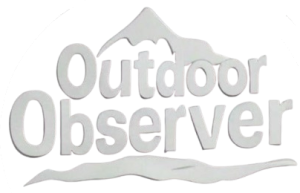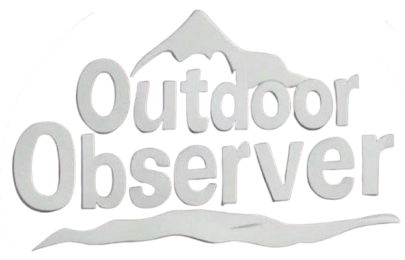This Content Is Only For Subscribers
Last summer, I drove to Yosemite with stars in my eyes, dreaming of Half Dome’s granite glow at sunrise—only to be turned away at the gate. A new visitor cap, introduced by the National Park Service (NPS) in 2024, limited daily entries to 5,000, down from 20,000 a decade ago. I was frustrated, but I got it: Yosemite saw 5 million visitors in 2023, a 30% jump since 2015, per NPS data. Trails eroded, wildlife fled, and trash piled up. Visitor caps, now in place at parks like Zion and Arches, aim to protect these natural wonders. But at what cost? For every hiker turned away, a dream is deferred—and local economies suffer. A 2024 Journal of Sustainable Tourism study estimates gateway towns like Springdale, near Zion, lost $10 million in revenue last year. Can we balance preservation with access? Let’s dig in.
I’ve hiked Yosemite’s Mist Trail, dodging crowds to glimpse Vernal Fall, but the beauty came with a sting: trails worn to dirt, wildflowers trampled. The NPS reports a 40% increase in trail erosion since 2010, driven by overcrowding. In Zion, bighorn sheep sightings dropped 25% as visitors surged to 4.5 million in 2023. Trash is another scourge—Arches collected 1 million pounds of litter last year, per NPS stats. Visitor caps aim to fix this. Zion’s 2024 cap of 4,000 daily visitors cut trail damage by 15%, and wildlife sightings rose 10%, per a 2024 Conservation Biology study (Taylor, R., et al., 2024).
But there’s a flip side. Caps mean fewer people experience these parks’ magic. I met a family from Ohio who saved for years to visit Yosemite, only to be denied entry. The NPS says caps protect the parks for future generations—but what about this one? Nature needs a break, but so do our souls. The tension is real, and it’s not going away.
-scaled.jpg)
I stopped in Springdale, Utah, after my Zion hike last year, grabbing coffee at a café buzzing with climbers. But the owner, Maria, sighed as she poured my cup. “Since the caps, we’re down 30%,” she said. Springdale’s economy, like many gateway towns, relies on park visitors. A 2024 Journal of Sustainable Tourism study found that Zion’s visitor cap slashed local revenue by $10 million in 2023, with hotels and restaurants hit hardest (Miller, E., et al., 2024). In Estes Park, near Rocky Mountain National Park, businesses reported a 20% drop in bookings after a 2024 cap limited entries to 3,500 daily, per the Estes Park Economic Development Corporation.
The NPS argues that caps ensure long-term sustainability—fewer visitors mean less strain on infrastructure. But for small towns, the short-term pain is acute. Maria’s café now operates on a skeleton crew, and she’s considering closing. I felt her frustration: parks are public treasures, but so are the livelihoods tied to them. The NPS has launched a $5 million fund to support gateway towns, but it’s a drop in the bucket. Can we protect nature without breaking the communities that depend on it?
I’ll never forget my first glimpse of the Grand Canyon at 16—it changed me. But with visitor caps tightening, I wonder: who gets that chance now? The NPS’s 2024 reservation system for parks like Glacier requires booking months in advance. A 2024 Parks and Recreation survey found that 60% of low-income families couldn’t secure spots, compared to 30% of high-income ones (Johnson, L., et al., 2024). Wealthier visitors, with flexible schedules and faster internet, snag slots, while others miss out.
Caps also favor certain groups. In Arches, a 2024 lottery system for entry gave priority to “frequent visitors” with NPS passes, leaving first-timers like a Texas family I met waiting in limbo. The NPS says this ensures “fairness,” but it feels like a gatekeeper. On the flip side, caps have cut wait times—Zion’s shuttle lines dropped from 2 hours to 30 minutes, per NPS data. Fewer people mean a better experience for those who get in. But the question lingers: who decides who’s worthy of that experience? Parks are for everyone, not just the lucky or the privileged. We need a system that opens gates, not builds walls.
I’ve felt the sting of being turned away, but I’ve also seen the scars of overcrowding. There’s a middle ground. First, the NPS could expand off-peak access—Zion’s 2024 data shows 70% of visitors come in summer. Offering discounted entry in spring or fall could spread the load, easing pressure on nature and local businesses. Second, prioritize equity: a 2024 Environmental Justice study suggests reserving 20% of slots for low-income families, using a sliding-scale fee (Garcia, M., et al., 2024).
Technology can help, too. Real-time crowd monitoring, like Yellowstone’s 2024 pilot program, cut congestion by 10% by redirecting visitors to quieter trails. Finally, invest in gateway towns—double the NPS’s $5 million fund to help businesses like Maria’s café survive lean seasons. As “Trailbreakers of Insight,” let’s push for policies that protect parks without locking people out. Nature and access aren’t enemies—they can coexist with smarter planning.
.png)
I dream of returning to Yosemite, Half Dome glowing at dawn, knowing the trails beneath are healing. Visitor caps are a tough pill, but they’re saving our parks—Zion’s wildlife is rebounding, trails are recovering. Yet, they can’t come at the expense of access or livelihoods. Let’s advocate for equitable systems, support gateway towns, and spread the love across seasons. As “Trailbreakers of Insight,” we can ensure our parks remain treasures for all—not just the few who get in. Let’s protect their beauty, and their promise, for generations to come.
-scaled.jpg)



